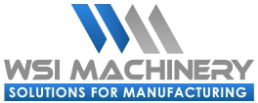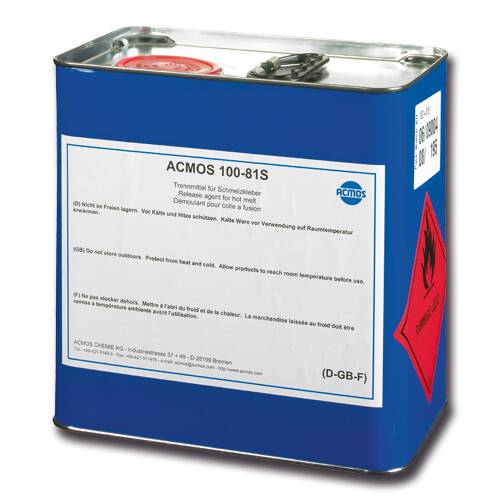ACMOS 100-81S
A release agent to combat phenolic resin and adhesives on edge banding and other gluing machines. Intended for use on edge-banding machines and other gluing machines to prevent the adherence of phenolic resin adhesives to coasting rollers, conveyor belts, etc. Effective on metal, wood, rubber and plastic.
ACMOS 100-81S forms a soft, plastic film, which can be removed with any commercially available solvent.
ACMOS 100-81S Features:
- Release agent for melt adhesives on edge banders
- Release agent for phenolic and similar resins that are used while fluid
- Prevents adhesion of holt-melt adhesive residues on surfaces of materials and equipment
- Protects pressure rollers, conveyor belts, and plastic surfaces against hot-melt adhesives
- Works with metal, wood, rubber and plastic materials
- Solvent based formulation
- Silicone-free, can be further diluted with water
*Due to the Hazardous Material classification of this product, an additional hazmat shipping fee will be applied for transport*
Application: Automatic | Manual
Classified as Hazardous/Hazmat for DOT Shipping: Flammable
Available Container Amounts:
Kg: 1 (Qty 12 Sold by Case) | 20 | (2-pack) 40 | 170
Gallons: 0.3 (Qty 12 Sold by Case) | 5.3 | (2-pack) 10.6 | 45
TECHNICAL DATA SHEET:
Basis:
No substances regarded as toxic or carcinogenic according to the Regulations concerning Dangerous Substances are used in the production of ACMOS 100-81S.
Range of applications:
Release agent for hot melt. Apply thinly and allow for it to act for a short time. Depending on the mechanical stress apply several times daily if necessary. Can be sprayed on or applied by a brush or cloth.
Properties:
ACMOS 100-81S forms a soft, plastic film, which can be removed with any commercially available solvent. Effective on metal, wood, rubber, and plastic. Particularly suitable for edge banding machines to prevent the adherence of synthetic resin adhesives to coasting rollers, conveyor belts, etc. Does not contain silicone.
Physical and chemical properties:
Form: Liquid
Appearance: Amber
Smell: Characteristic
Density at 20°C: 1 g/ml ; DIN 51757
Active substances: 30.00
Flashpoint: > 24°C ; EN ISO 13736
Viscosity at 20°C: 11 sec ; Flow cup 4mm DIN EN ISO 2431
Stockage:
Storage temperature: between 10°C and 30°C
Maximum storage: approx. 18 months
Processing:
Flammable. Do not store outdoors. Protect from heat and cold. Allow products to reach room temperature before use.
Why release agents are important
Release agents are critical to prevent glue and adhesives from sticking on both edgebanding machining tools and workpiece surfaces. They are developed in a liquid form and as such can be used in both automatic and manual edge processing.
Release agents are sprayed on the top and bottom of the workpiece edge areas. This prevents adhesive residue from sticking to the workpiece. Release Agents work with a variety of glues and adhesives for high-quality woods, veneers, and plastic-coated surfaces.
Advantages
Reduces production downtime due to cleaning. The process of edging can lead to unwanted glue residue on materials and equipment. Without the use of a release agent, glue residue can quickly stick and become very difficult to clean and remove. This results in a loss of production and machine downtime. Production employees are forced to spend valuable time cleaning up, instead of streamlining the manufacturing process. By using a release agent, a thin, barely visible lubricant film is formed, which prevents the adhesion of glue residues, thus avoiding time-consuming cleanup work.
Helps maintain production equipment. A common problem with edge processing is undesired glue buildup on machining tools. Glue buildup can cause unnecessary wear and tear on tools and lead to increased machine maintenance and costs. The continuous use of release agents protects the components of an edgebander, such as pressure rollers, trimming tools, hot melt adhesive tanks and buffing wheels against glue buildup. Using release agents is very important to the longevity of equipment.
Promotes high-quality finishes. Perfect, high-quality surfaces are a premium for edgebanding. During application, glue squeeze out occurs, which often creates glue lines and residue, thus affecting the quality of finished products. Release agents used during the edgebanding process prevent adhesive residues from sticking, while protecting the edge and foil from marks and friction, thus providing excellent surfaces.



